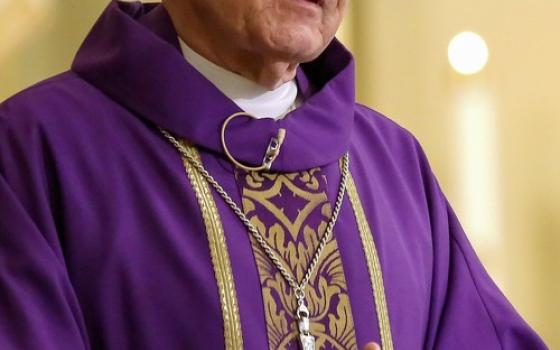
Though a Sept. 14 meeting between the head of the breakaway Society of St. Pius X and the Vatican’s top doctrinal official marks the latest olive branch to Catholic traditionalists extended by Rome, experts cautioned against expecting a dramatic turn in the relationship anytime soon.
In late August, the Vatican announced the September meeting between Bishop Bernard Fellay, head of the traditionalist body founded by the late Swiss Archbishop Marcel Lefebvre, and American Cardinal William Levada, prefect of the Vatican’s Congregation for the Doctrine of the Faith.
The session was intended to review a round of talks that began in 2009, after Pope Benedict XVI lifted the excommunications of four bishops of the Society of St. Pius X, including Fellay, who was ordained by Lefebvre in 1988 in defiance of papal authority. That move, in tandem with Benedict’s 2007 decision to authorize wider celebration of the older Latin Mass, was to pave the way to ending the only formal schism to follow the Second Vatican Council (1962-65).
To date, however, things don’t seem to be working out that way.
The talks took place during 2009 and 2010. The five-member Vatican delegation consisted of Italian Msgr. Guido Pozzo, secretary of the “Ecclesia Dei” Commission responsible for relations with the traditionalists; Spanish Jesuit Archbishop Luis Ladaria, secretary of the doctrinal congregation; German Jesuit Msgr. Karl Becker, a longtime adviser to the congregation; Spanish Msgr. Fernando Ocáriz, vicar general of Opus Dei; and Swiss Dominican Fr. Charles Morerod, rector of the Angelicum University.
The Society of St. Pius X put together a delegation led by Spanish Bishop Alfonso de Galarreta, another of the four prelates ordained by Lefebvre whose excommunication was lifted in 2009.
The talks focused on four themes, which represent the core concerns for the traditionalists:
- Liturgy;
- Ecclesiology, including ecumenism and interfaith dialogue;
- Religious freedom;
- The magisterium of the Second Vatican Council.
Though introduced to considerable fanfare, the talks appeared to stall in 2010 when Fellay gave a controversial interview in which he said that for the traditionalists, the aim of the sessions wasn’t finding compromise but rather explaining to the Vatican the “contradictions” between eternal Catholic teaching and the innovations introduced at Vatican II.
That interview apparently produced some tension at the final session in April 2010. Speaking on background, a participant told NCR that at one point Pozzo, who chaired the meetings, asked one of the Vatican delegates if he’d like to contribute something. The delegate reportedly replied: “Bishop Fellay has said that the purpose of these talks is for the society to explain what it means to be Catholic. Do I actually need to speak?”
In the same interview, Fellay also said that two new stumbling blocks to reunion had emerged: the May 1 beatification of Pope John Paul II, whom traditionalists considered excessively liberal, and Benedict’s plan to host an interreligious summit in Assisi, Italy, this October.
Just before the last session of talks in April 2010, one of the Vatican participants said on background that he had quietly spoken with Levada about whether the time had arrived to pull the plug, given what he saw as a lack of movement on the traditionalist side.
Most signals suggest that little has changed in the last year to suggest a new concession by the traditionalists is in the offing.
For instance, Fr. Davide Pagliarani, superior of the Society of St. Pius X in Italy, recently said, “The canonical situation in which the society presently finds itself is a result of its resistance to the errors that infest the church.”
Consequently, reconciliation “does not depend on us, but on the hierarchy’s acceptance of the contribution that tradition can make to the restoration of the church,” Pagliarani said in an interview published in English Aug. 13 on the society’s Web site.
The Society of St. Pius X numbers roughly 500 priests in 31 nations, along with 200 seminarians and just over 100 brothers and 100 religious women. Headquartered in Ecône, Switzerland, the society claims a following of some 1 million faithful worldwide.




